Red Shrubs For Landscaping
Gardening is an art that paints a landscape with a palette of vibrant colors and textures. While flowers often steal the show, the allure of richly hued foliage can be equally captivating. I introduce you to red shrubs for landscaping that sport red leaves throughout the year.
These red bushes come in diverse shapes and sizes, catering to different landscapes and climates, and offer a unique aesthetic appeal that can transform your garden into a year-round spectacle of color.
Red Leaves
Chlorophyll and Anthocyanin
The green hue of leaves is primarily due to the presence of chlorophyll, a pigment crucial for photosynthesis. However, the captivating red and purple shades in some plants are due to another pigment called anthocyanin.
Anthocyanin often accumulates in young red leaves and degrades in mature ones, protecting leaves from UV light and oxidative damage.
This interplay between chlorophyll and anthocyanin results in the formation of red leaves in certain red bushes.
Light’s Influence on Color
Light plays a significant role in leaf coloration. The ratio of red to far-red light influences leaf and stem elongation, and can affect the overall growth of the plant.
Bright light exposure can intensify red leaf pigmentation, as plants absorb large amounts of red light while reflecting far-red light.
This absorption and reflection process can lead to a more vibrant display of red hues in the leaves of certain red bushes.
Types of Red Shrubs
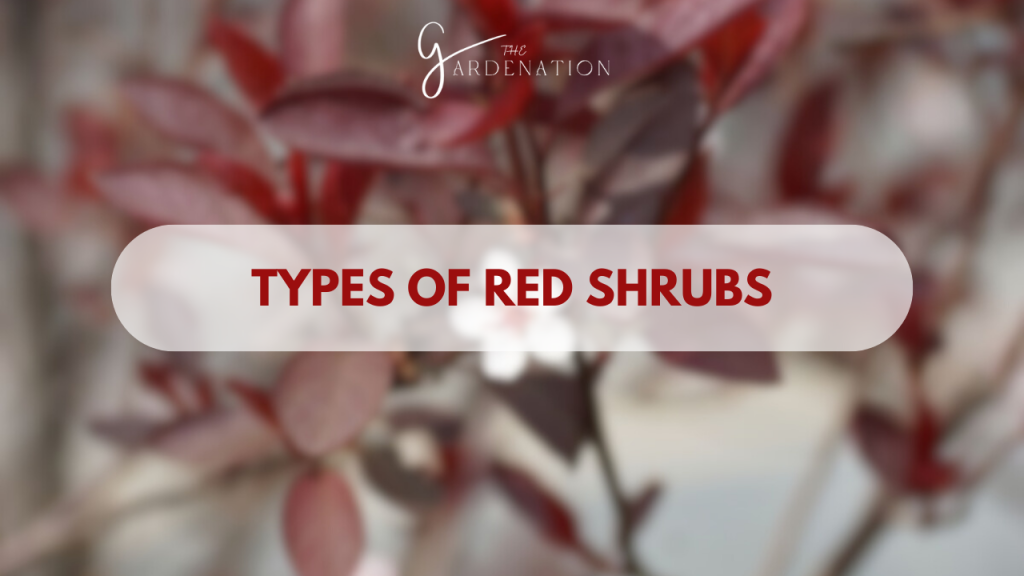
1. Diablo Ninebark (Physocarpus opulifolius ‘Monlo’)
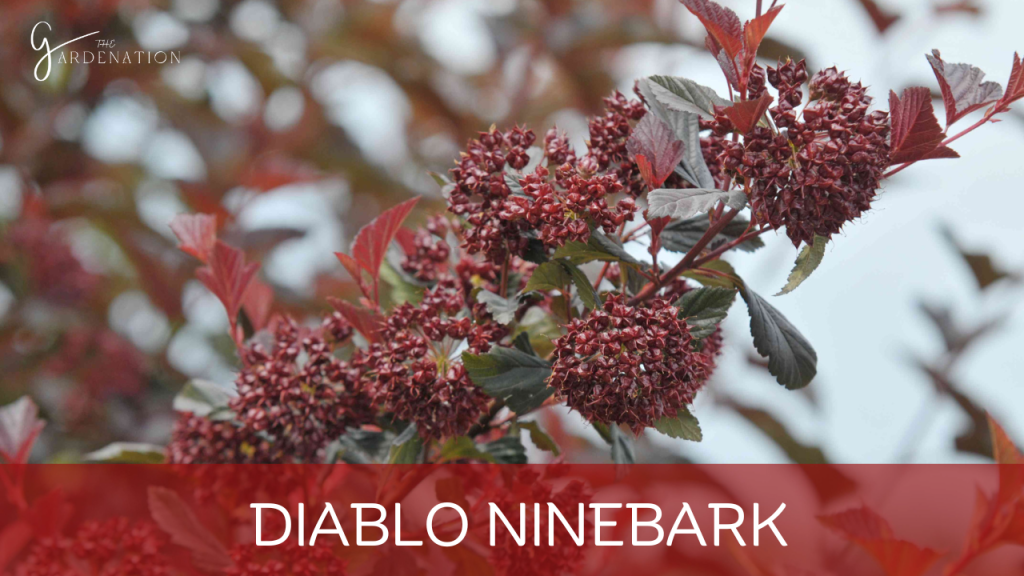
The Diablo Ninebark, scientifically known as Physocarpus opulifolius ‘Monlo’, is a deciduous shrub that stands out in any landscape due to its unique textured bark and stunning creamy-white flowers. The most captivating feature, however, is its red foliage that adds a splash of color to your garden throughout the year.
- Scientific Name: Physocarpus opulifolius ‘Monlo’
- Type: Deciduous
- Ideal Position: Full/partial sun
- Hardiness Zone: 3-7
- Mature Size: 8-10’
This shrub thrives in full to partial sun, making it a versatile choice for different garden locations. It is hardy in zones 3-7, which means it can withstand cold temperatures and is suitable for various climates. When fully grown, the Diablo Ninebark can reach a mature size of 8-10 feet, providing a substantial presence in my landscape.
2. Royal Purple Smokebush (Cotinus coggygria ‘Royal Purple’)
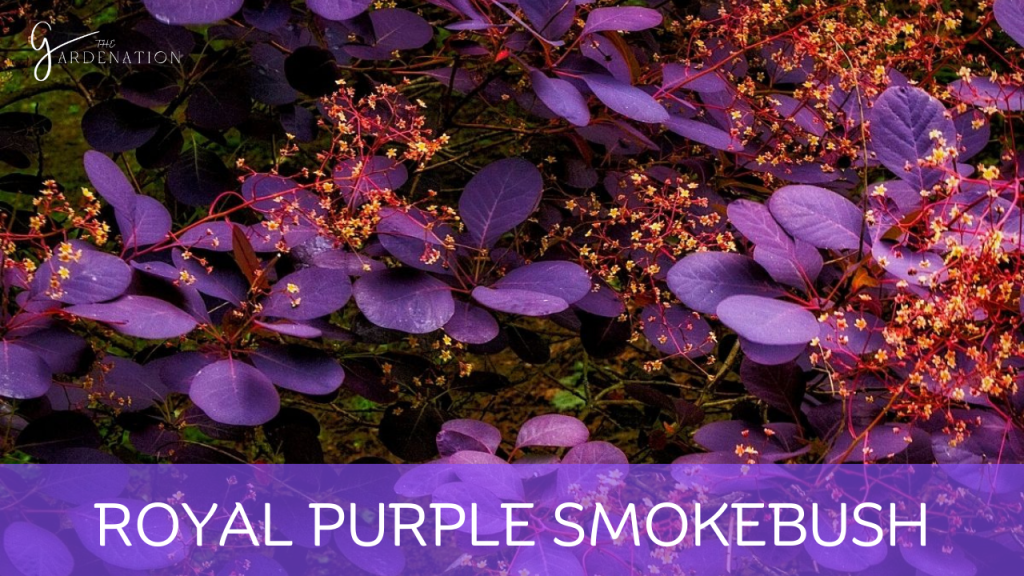
The Royal Purple Smokebush, or Cotinus coggygria ‘Royal Purple’, is a deciduous shrub known for its wide climate range and versatility as an ornamental plant. Its enchanting allure comes from its smoke-like flower plumes that create a dramatic effect in any garden.
- Scientific Name: Cotinus coggygria ‘Royal Purple’
- Type: Deciduous
- Ideal Position: Full sun
- Hardiness Zone: 4-9
- Mature Size: 10-15’
The Royal Purple Smokebush prefers full sun and is hardy in zones 4-9. It can grow to a mature size of 10-15 feet, making it a significant addition to your landscape. The deep purple leaves add a striking contrast to the typical green foliage found in most gardens.
3. Ruby Loropetalum (Loropetalum chinense ‘Ruby’)
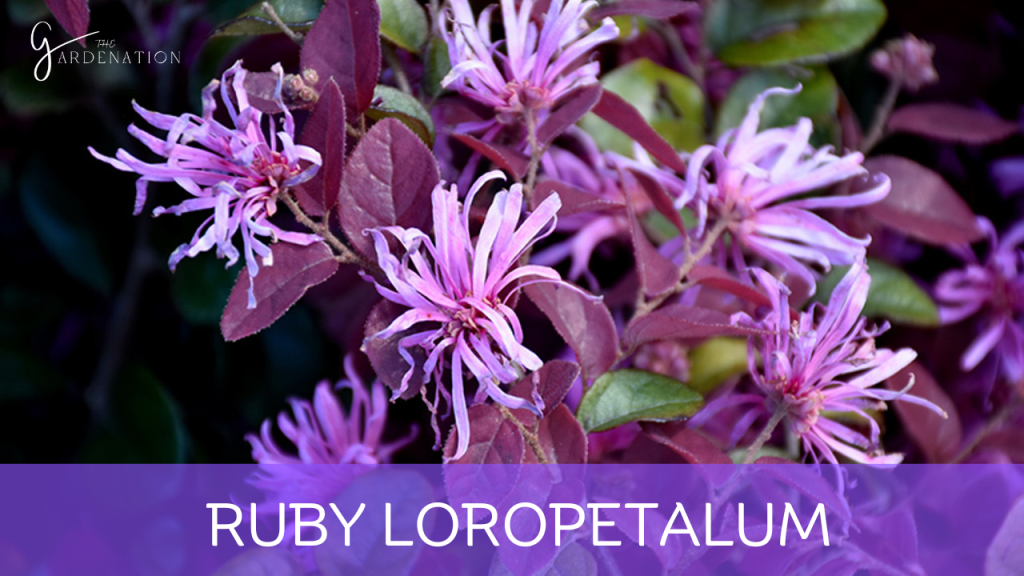
The Ruby Loropetalum, also known as the Chinese Fringe Flower, is an evergreen shrub that offers year-round interest with its vibrant red foliage and fragrant pink blossoms. This shrub requires regular pruning to maintain its vibrant red foliage and compact shape.
- Scientific Name: Loropetalum chinense ‘Ruby’
- Type: Evergreen
- Ideal Position: Full/partial sun
- Hardiness Zone: 7-9
- Mature Size: 4-6’
It thrives in full to partial sun and is hardy in zones 7-9. The Ruby Loropetalum can reach a mature size of 4-6 feet, making it a medium-sized shrub that fits well in various landscape designs.
4. Crimson Fire Loropetalum (Loropetalum chinense ‘Crimson Fire’)
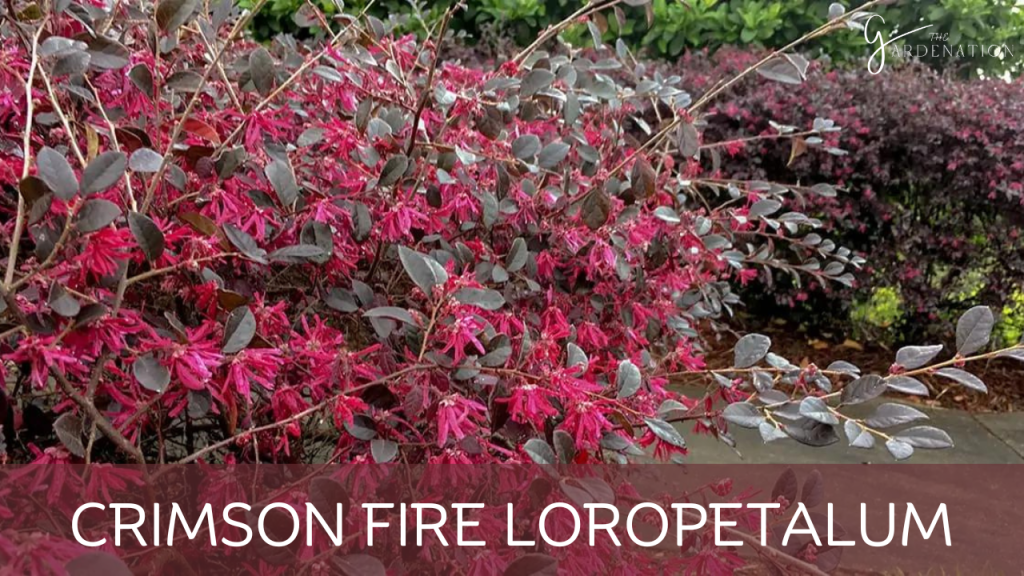
The Crimson Fire Loropetalum is a compact variety of the Chinese Fringe Flower. It is an evergreen shrub known for its year-round red-burgundy hues. This shrub is appreciated for its pest resistance and low-maintenance appeal, making it a favorite among gardeners.
- Scientific Name: Loropetalum chinense ‘Crimson Fire’
- Type: Evergreen
- Ideal Position: Full/partial sun
- Hardiness Zone: 7-9
- Mature Size: 2-3’
It thrives in full to partial sun and is hardy in zones 7-9. The Crimson Fire Loropetalum grows to a mature size of 2-3 feet, making it an excellent choice for smaller gardens or as a border plant.
5. Flirt Nandina (Nandina domestica ‘Murasaki’)
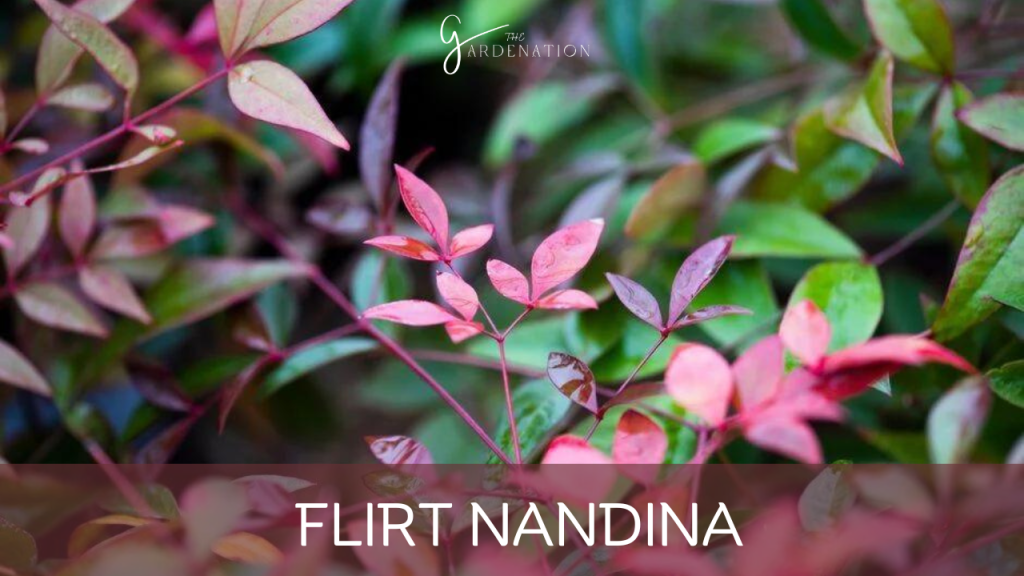
The Flirt Nandina, scientifically known as Nandina domestica ‘Murasaki’, is an evergreen shrub that offers prolonged red leaf interest, adding a pop of color to your garden throughout the year. This shrub requires strategic pruning for continuous spring-to-fall growth.
- Scientific Name: Nandina domestica ‘Murasaki’
- Type: Evergreen
- Ideal Position: Full/partial sun
- Hardiness Zone: 6-9
- Mature Size: 1-2’
It thrives in full to partial sun and is hardy in zones 6-9. The Flirt Nandina grows to a mature size of 1-2 feet, making it a compact shrub suitable for small gardens or as a ground cover.
Defining Red Shrubs in the Garden
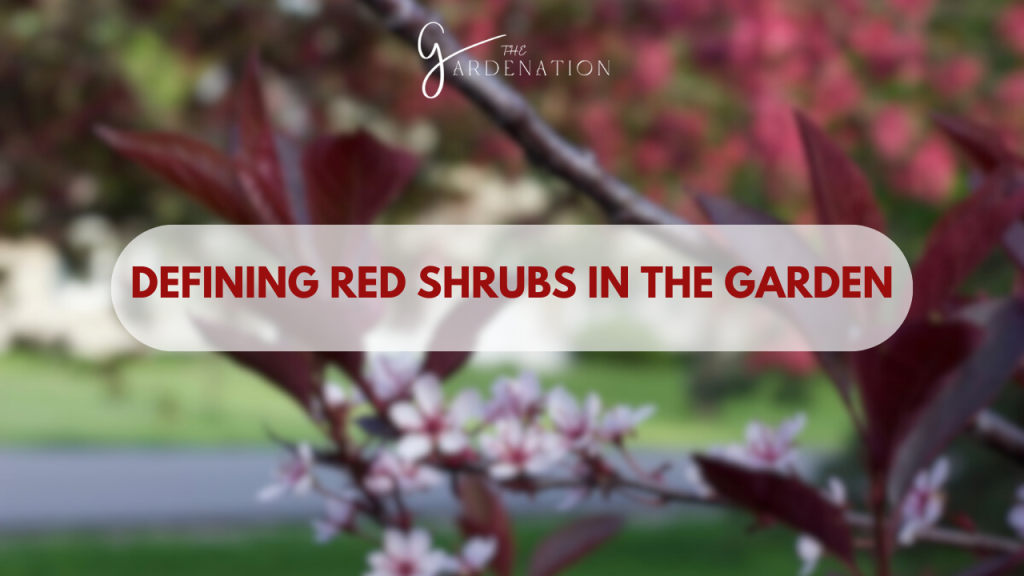
Red Shrubs are woody, perennial plants that can take a variety of shapes, colors, and forms. They can be large or small, deciduous or evergreen, and their multi-stemmed nature often distinguishes them from trees.
Red bushes play a vital role in shaping garden spaces, providing structure, color, and texture.
Herbaceous Perennials and Their Role
Herbaceous perennials, such as Coral Bells (Heuchera), are plants that die back to the ground in winter and return in the spring. They offer unique characteristics in landscape design, providing a balance of visual interest with other perennial options.
Coral Bells, for instance, come in a variety of colors, with some varieties like Forever Red, Berry Smoothie, Caramel, and Red Lightning offering vivid crimson or red hues
For more information more about gardening you can visit: Tall Succulent Types
Woody Perennials: Evergreen vs. Deciduous
Woody perennials can be categorized based on their annual life cycle into evergreen and deciduous red shrubs. Evergreen shrubs, like the Ruby Loropetalum, retain their red leaves throughout the year, providing constant color and structure.
Deciduous red bushes, like the Diablo Ninebark, shed their red leaves annually but often offer attractive features such as textured bark or vibrant fall foliage
Frequently Asked Questions about Red Shrubs for Landscaping
How can I encourage faster growth in my red shrubs with red foliage?
To promote faster growth, ensure your red shrubs are planted in the ideal position according to their specific light requirements, whether full sun or partial shade.
Regular watering, especially during dry spells, and the application of a balanced fertilizer in early spring can also stimulate growth. Mulching around the base of the shrub can help retain moisture and regulate soil temperature.
What are the best pruning practices for maintaining vibrant red foliage?
Pruning practices vary depending on the type of shrub. For deciduous red shrubs like Diablo Ninebark and Royal Purple Smokebush, prune in late winter or early spring to remove dead or crossing branches and to shape the plant.
For evergreen shrubs like Ruby Loropetalum and Crimson Fire Loropetalum, light pruning can be done in spring to maintain shape and encourage new growth with vibrant foliage.
How often should I water my red shrubs?
Watering frequency depends on the shrub type, soil conditions, and climate. Generally, a deep watering once a week is sufficient for established red shrubs. Newly planted red bushes may require more frequent watering until their root systems are established. Always check the soil moisture level before watering to avoid overwatering.
Can red shrubs grow in shaded areas?
While most red shrubs prefer full to partial sun to develop the best leaf color, some can tolerate shaded areas. However, the intensity of the red coloration may be reduced in less light. It’s important to research the specific light requirements of each shrub to ensure optimal growth and foliage color
Conclusion
The variety of red bushes listed above offers a wide range of options for gardeners and landscapers looking to add color and texture to their outdoor spaces.
From the unique bark of the Diablo Ninebark to the smoke-like flower plumes of the Royal Purple Smokebush, each plant brings its own unique appeal. Whether you’re looking for a low-maintenance option like the Crimson Fire Loropetalum or a vibrant showstopper like the Inaba Shidare Japanese Maple, there’s a shrub to suit every garden’s needs.
Remember, the key to a thriving garden is understanding the specific needs of each plant, from sunlight requirements to pruning schedules

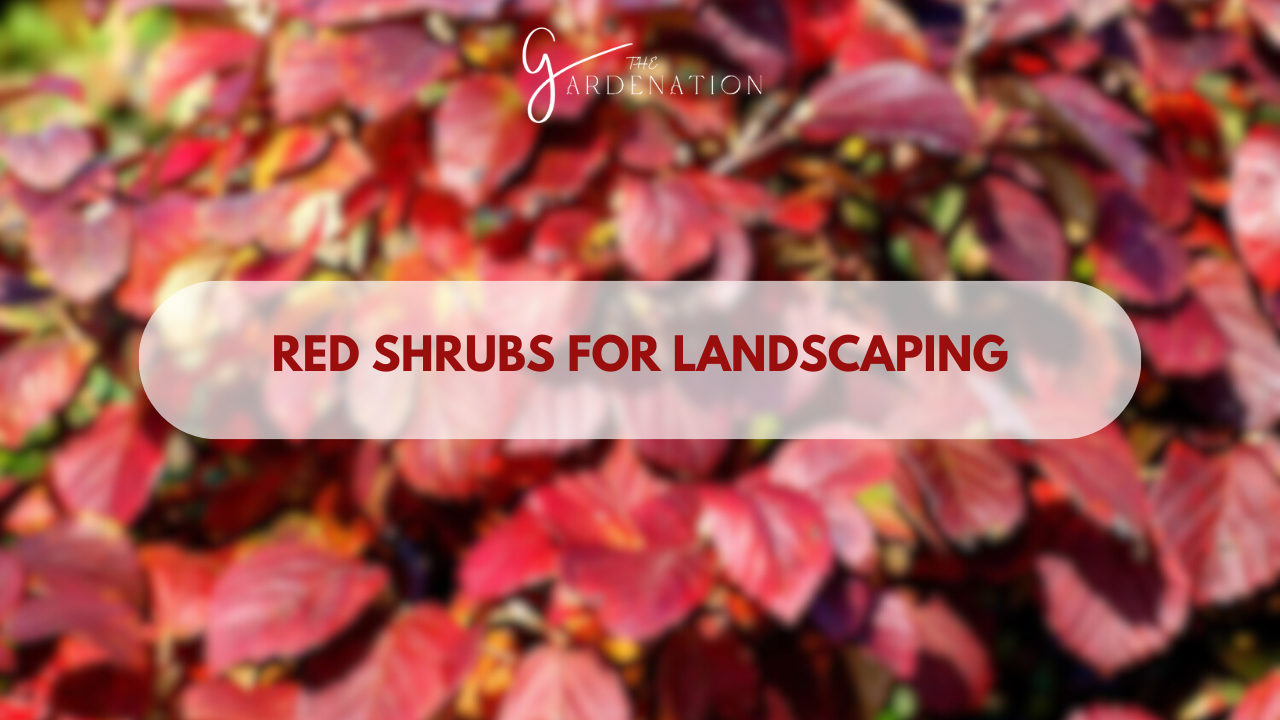
One Comment